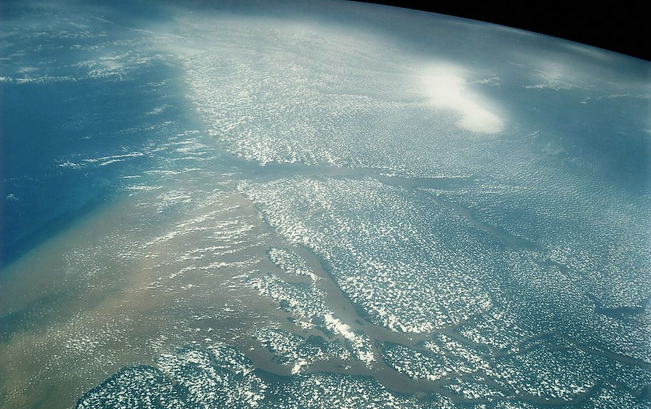(单词翻译:单击)
Though a lawyer by profession, Hadley had a keen interest in the weather (he was, after all, English) and also suggested a link between his cells, the Earth's spin, and the apparent deflections of air that give us our trade winds. However, it was an engineering professor at the Ecole Polytechnique in Paris, Gustave-Gaspard de Coriolis, who worked out the details of these interactions in 1835, and thus we call it the Coriolis effect. (Coriolis's other distinction at the school was to introduce watercoolers, which are still known there as Corios, apparently.) The Earth revolves at a brisk 1,041 miles an hour at the equator, though as you move toward the poles the rate slopes off considerably, to about 600 miles an hour in London or Paris, for instance. The reason for this is self-evident when you think about it. If you are on the equator the spinning Earth has to carry you quite a distance—about 40,000 kilometers—to get you back to the same spot. If you stand beside the North Pole, however, you may need travel only a few feet to complete a revolution, yet in both cases it takes twenty-four hours to get you back to where you began. Therefore, it follows that the closer you get to the equator the faster you must be spinning.
哈德利是一名职业律师,但对天气怀有浓厚的兴趣(他毕竟是英国人)。他还提出了环流、地球自转和空气明显转向之间的关系。空气转向产生了信风。然而,是巴黎高等工科学校的工程教授宙斯塔夫-加斯帕尔·德·科里奥利于1835年解决了这些相互作用的细节问题,因此我们称其为科里奥利效应。(科里奥利在学校的另一项贡献是友明了水冷却器,至今依然被称为科里奥利冷却器。)地球在赤道以每小时1675公里左右的速度转动,要是你朝极地移动,这个速度会大大慢下去,慢到比如伦敦或巴黎的每小时900公里左右。你只要仔细想一想,其原因是不言自明的。要是你在赤道第区,地球不得不带着你转过相当远的路程——大约40000公里——才能把你送回原地。而要是你在北极,你只要走几米就可以转完一圈。然而,无论哪种情况,你都必须花24个小时才能回到始发地。于是,你离赤道越近,你的转动速度必然越快。
The Coriolis effect explains why anything moving through the air in a straight line laterally to the Earth's spin will, given enough distance, seem to curve to the right in the northern hemisphere and to the left in the southern as the Earth revolves beneath it.
为什么在空中以与地球自转方向相横做直线运动的物体,只要距离相当,在北半球似乎向右做弧线运动,在南半球似乎向左做弧线运动?科里奥利效应认为那是因为地球在下面转动。


